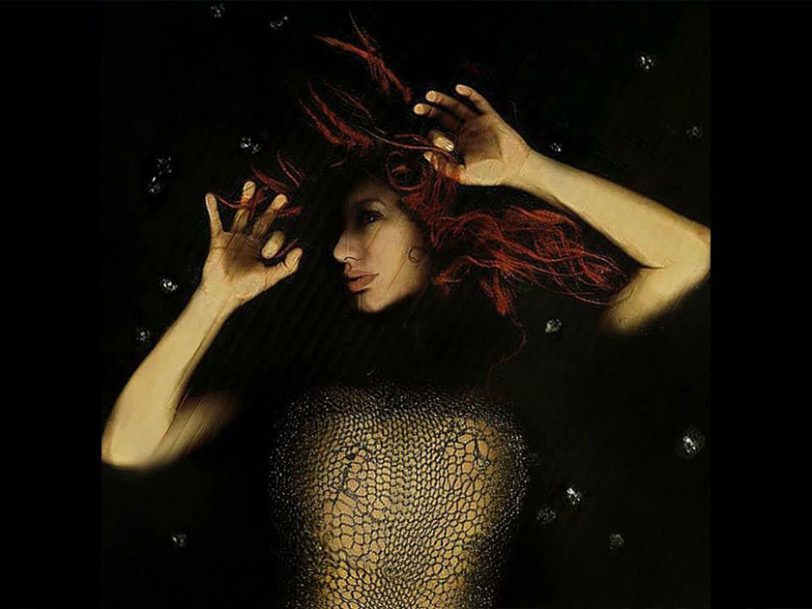The album cover: “I am snogging this massive machine in the corner”
“Picture this,” Amos said in April 1998, revealing the artwork for the album, which was released the following month, on 5 May 1998. “There’s a photocopy office, the fluorescent light is still buzzing and there I am snogging the massive machine in the corner. The only way you can stay on the machine is to have a piece of your body suctioned onto it. It takes seven minutes a picture.”
Created by the photographer Katerina Jebb, the arresting images for from the choirgirl hotel’s artwork were produced by Amos clambering onto a body-length colour photocopier, in order to visually evoke limbo, loss and disappearance. “How could we use photography to capture girls who’d been lost, who weren’t there?” Amos wrote in her first book, 2005’s Piece By Piece. “The daughters and mothers on that album are no longer in their bodies. Elyse [Taylor, at Amos’ record label EastWest] brought in the artist Katerina Jebb, who creates photographs using a Xerox machine, very ghostly, ideal for the project. We were able to create a strong visual, avoid the problem of conventional glamour, and stay true to the text.”
The future: “Some sort of balance for myself”
Tori Amos toured from the choirgirl hotel with her full band, and was so proud of the result that performances from that tour would be included on her next album, 1999’s To Venus And Back. Yet she now needed a period where her songs would set up home again, whether in the Choirgirl Hotel or somewhere new.


